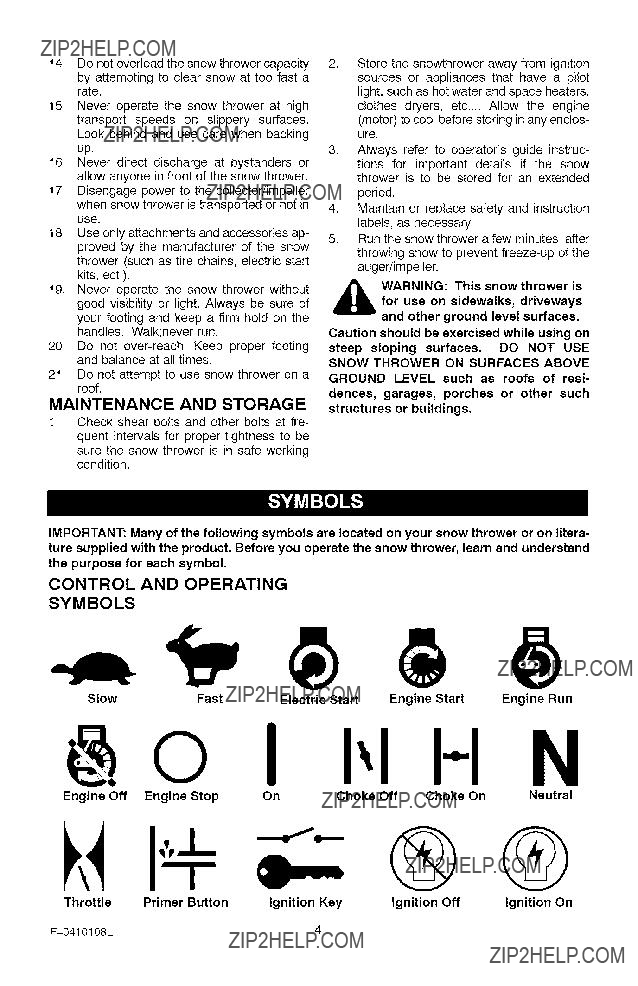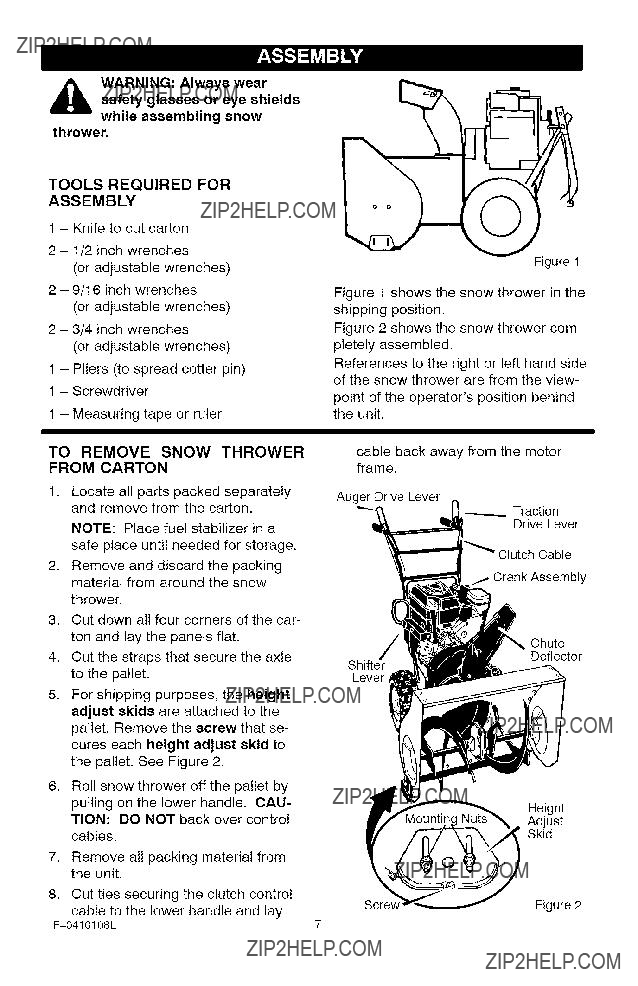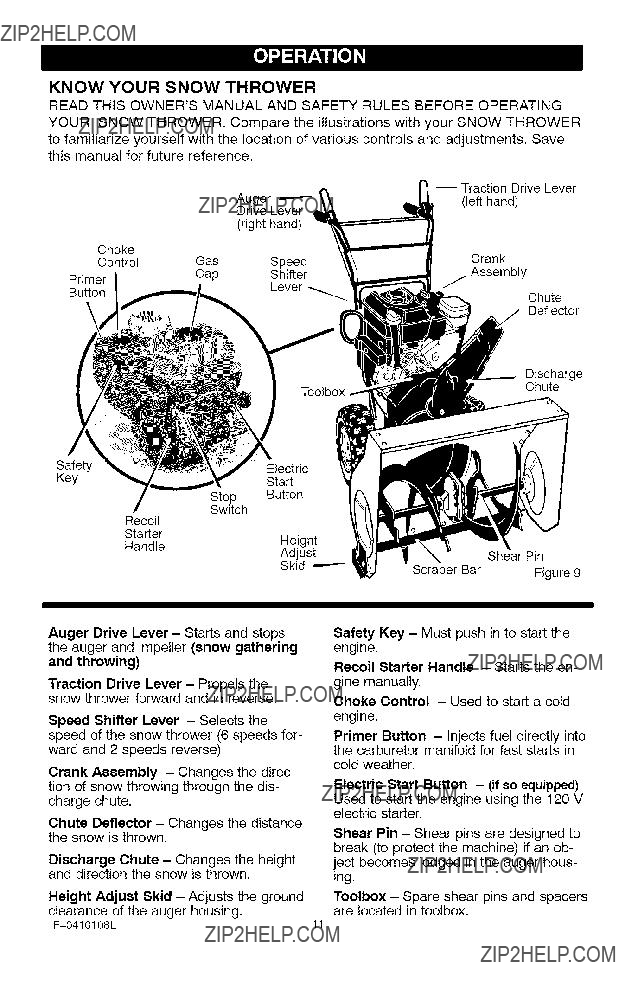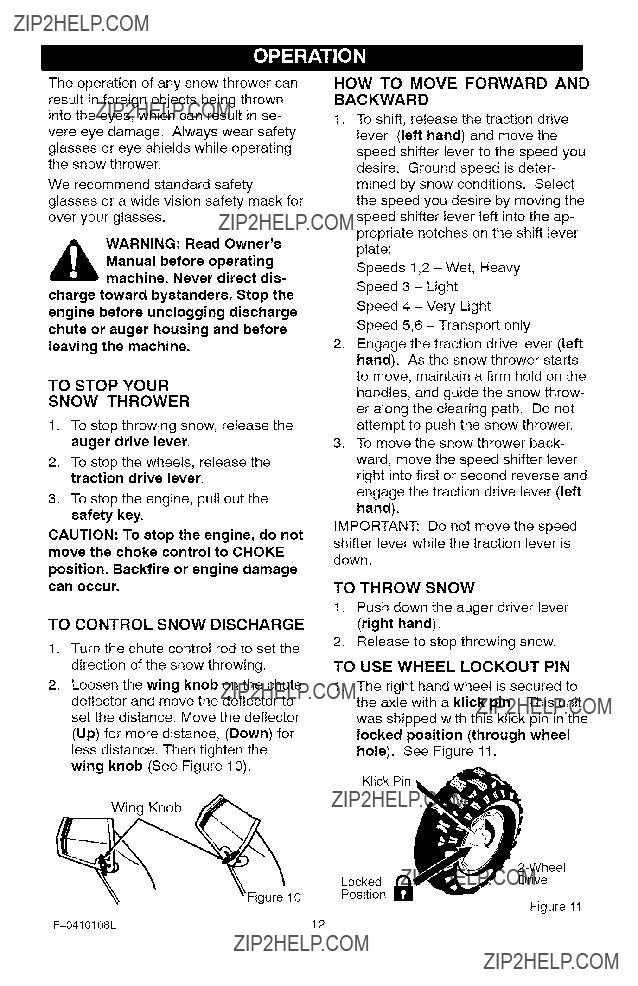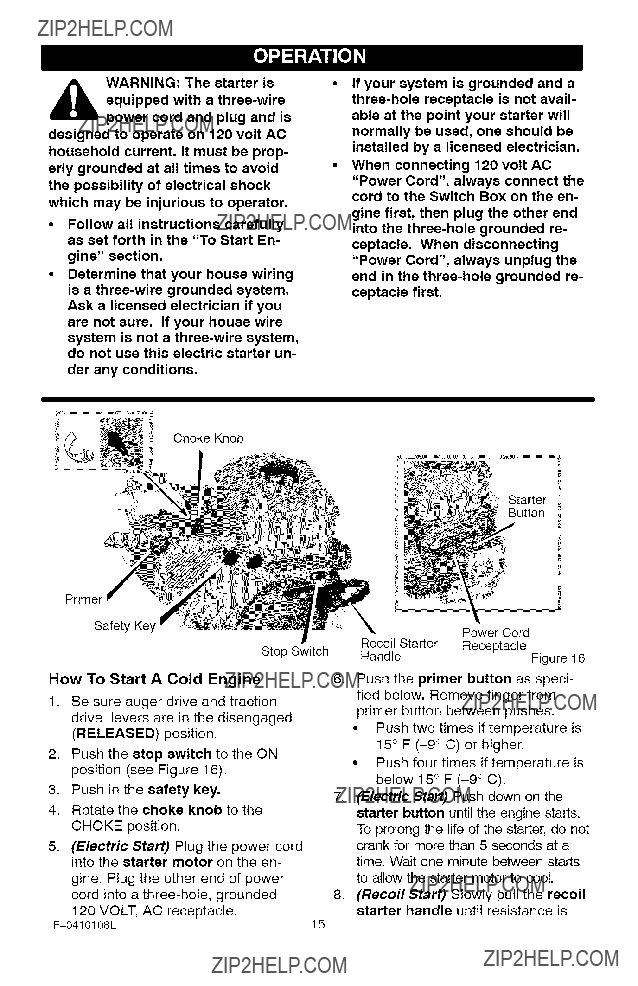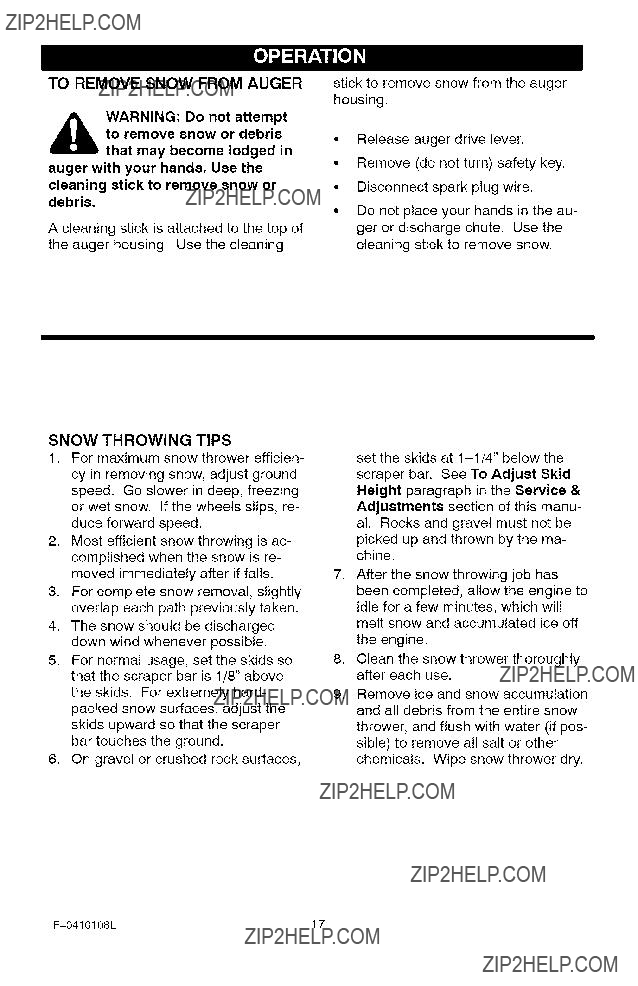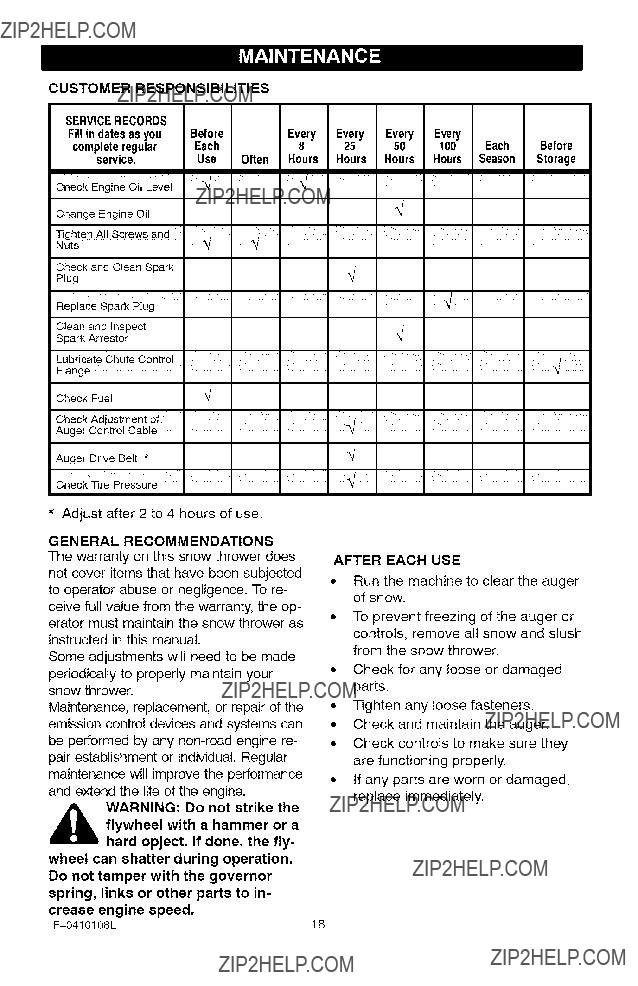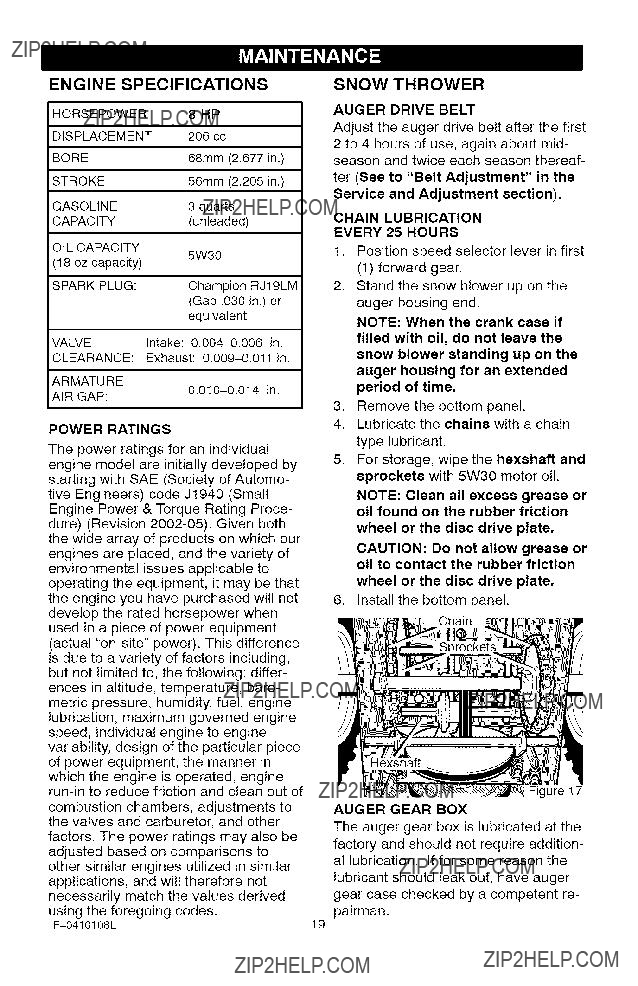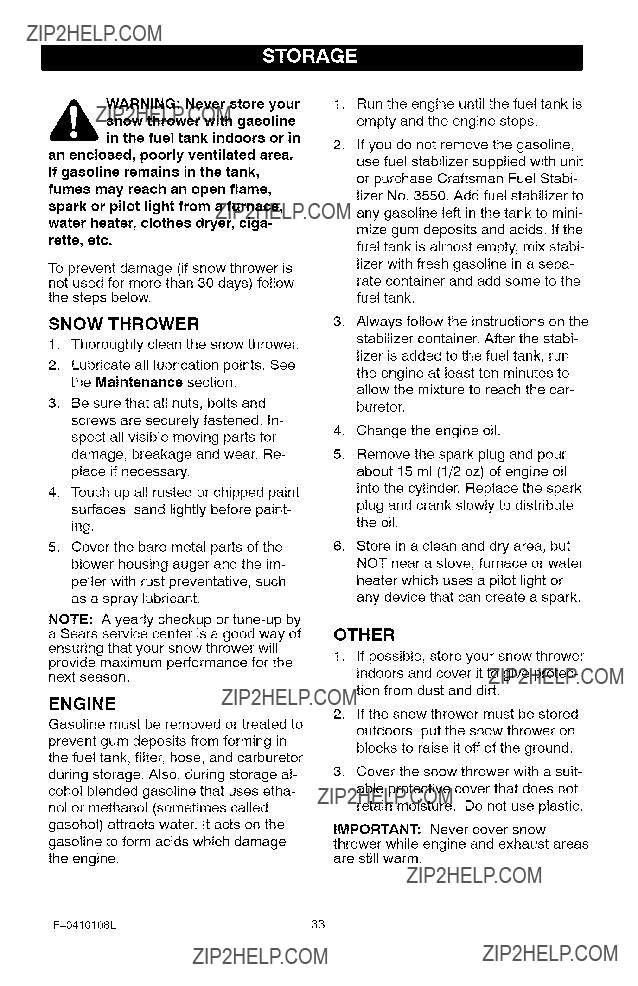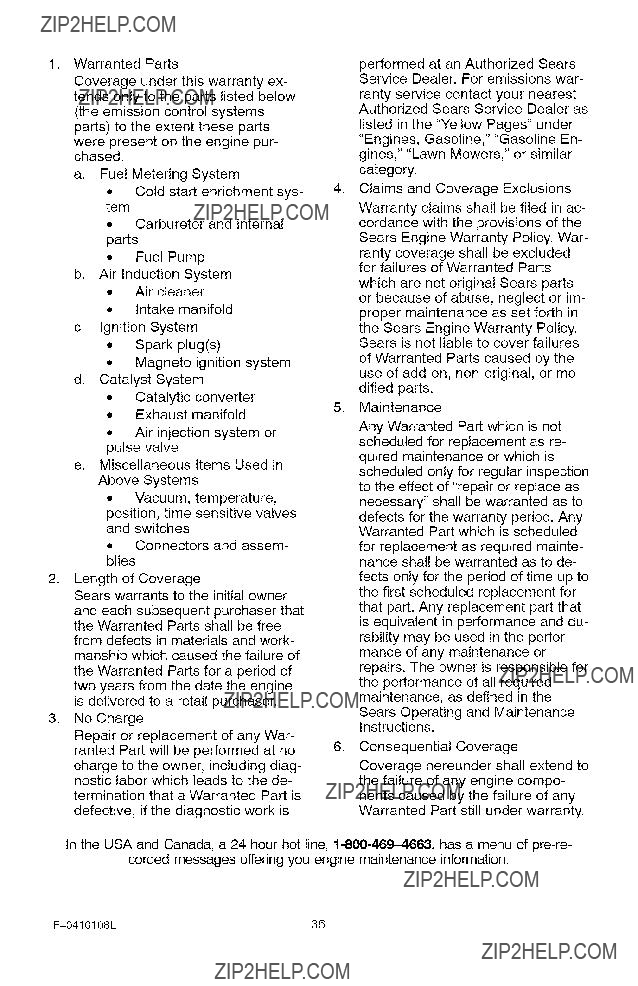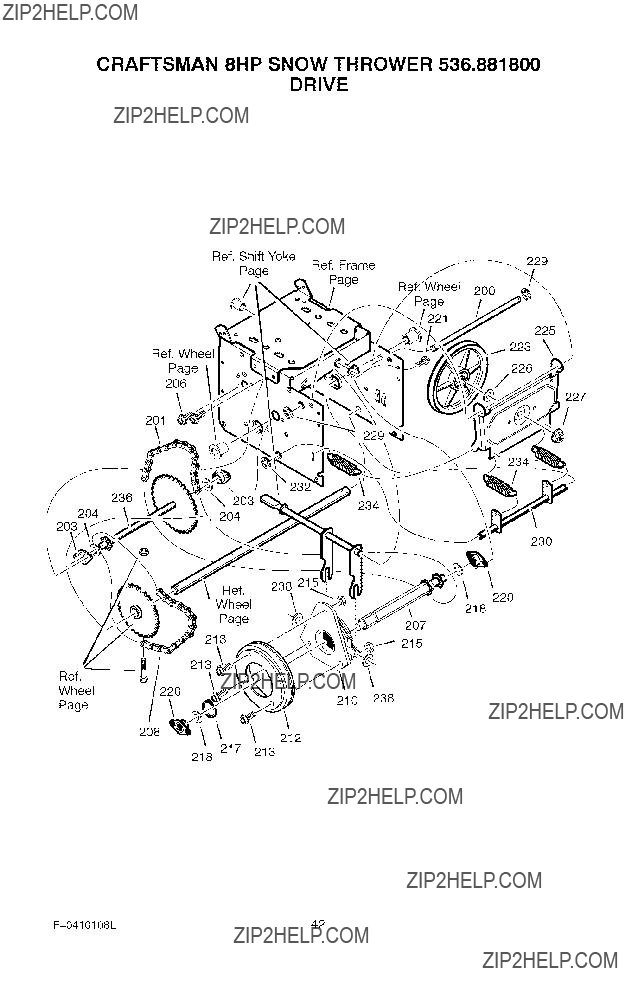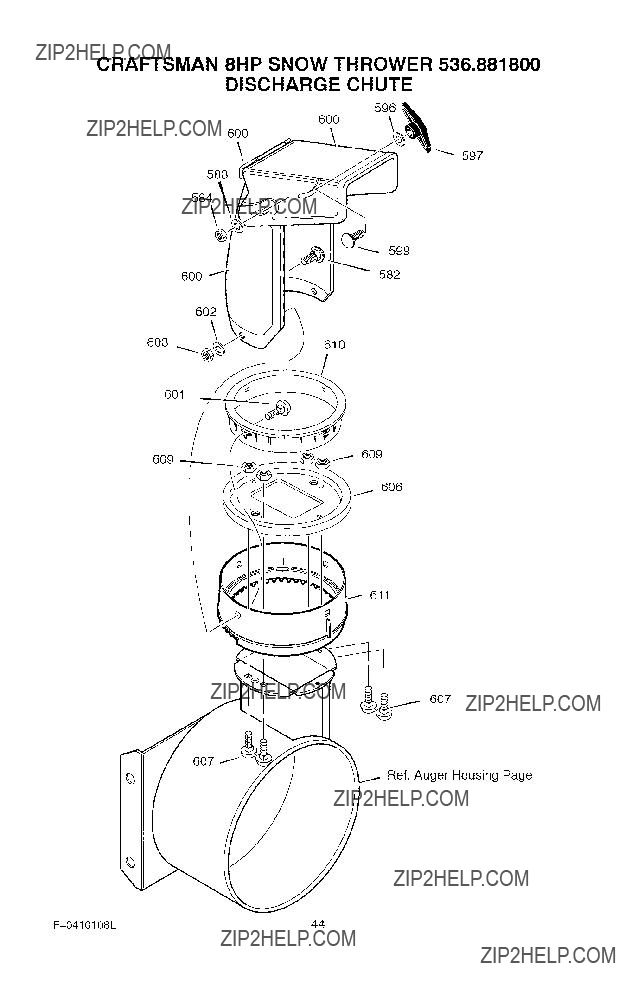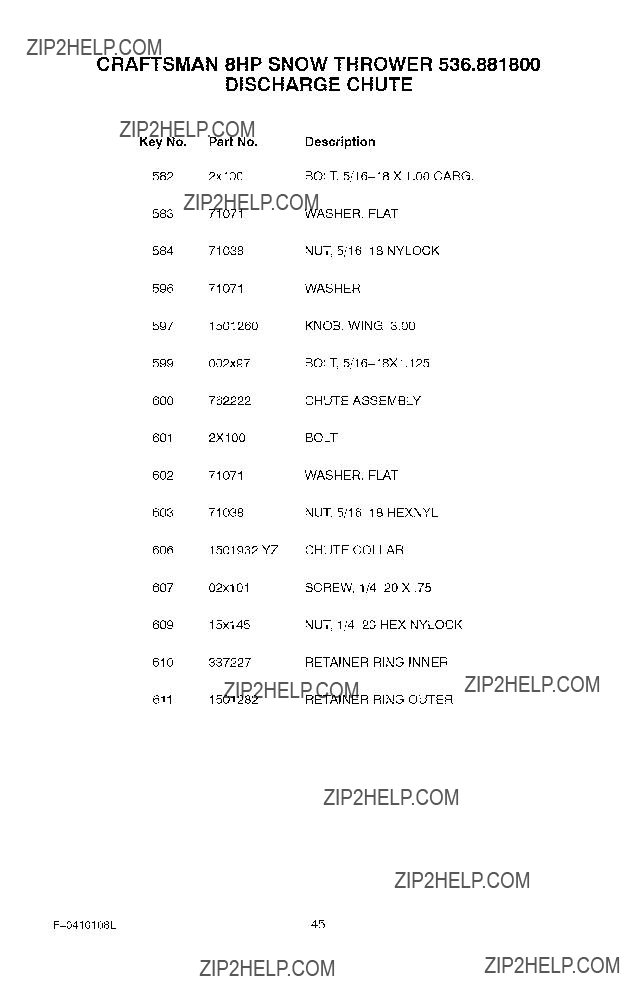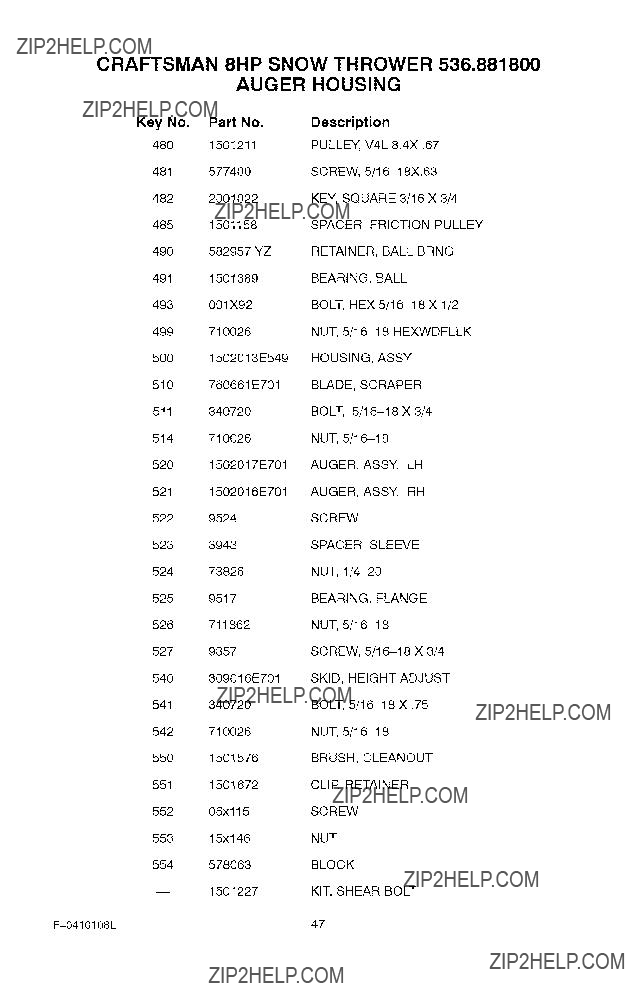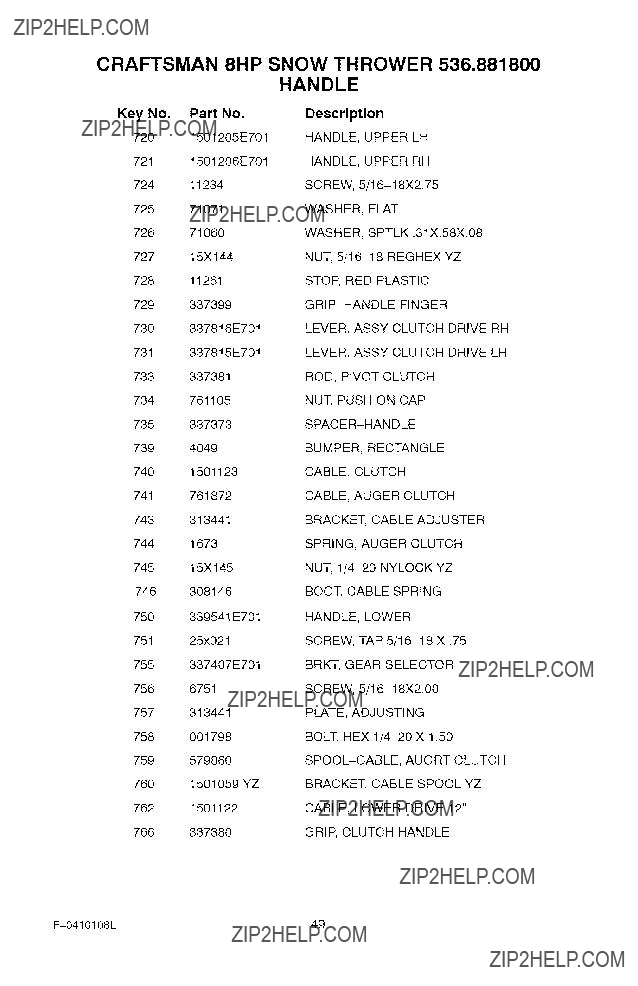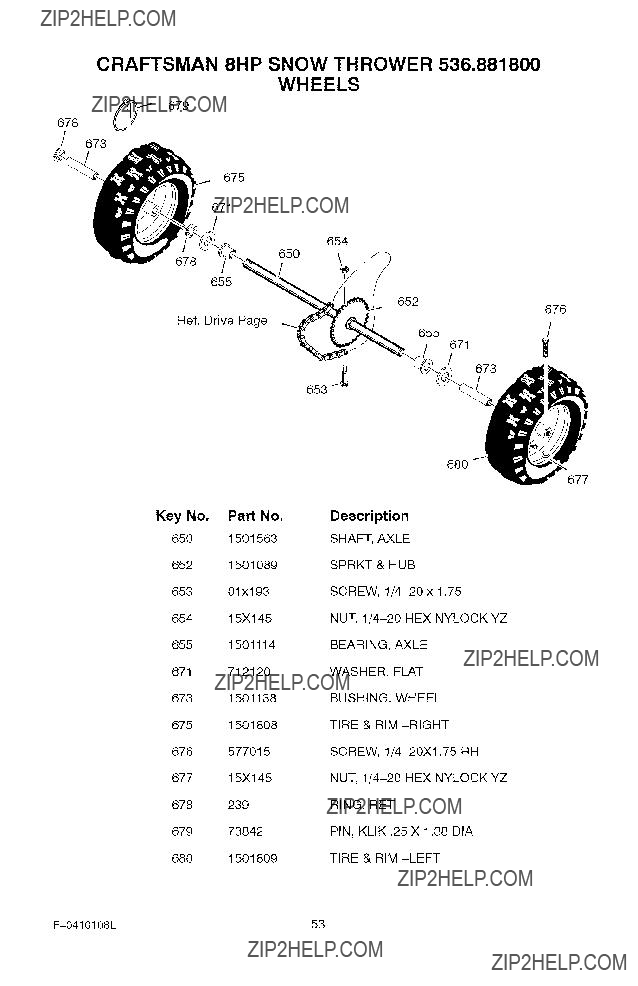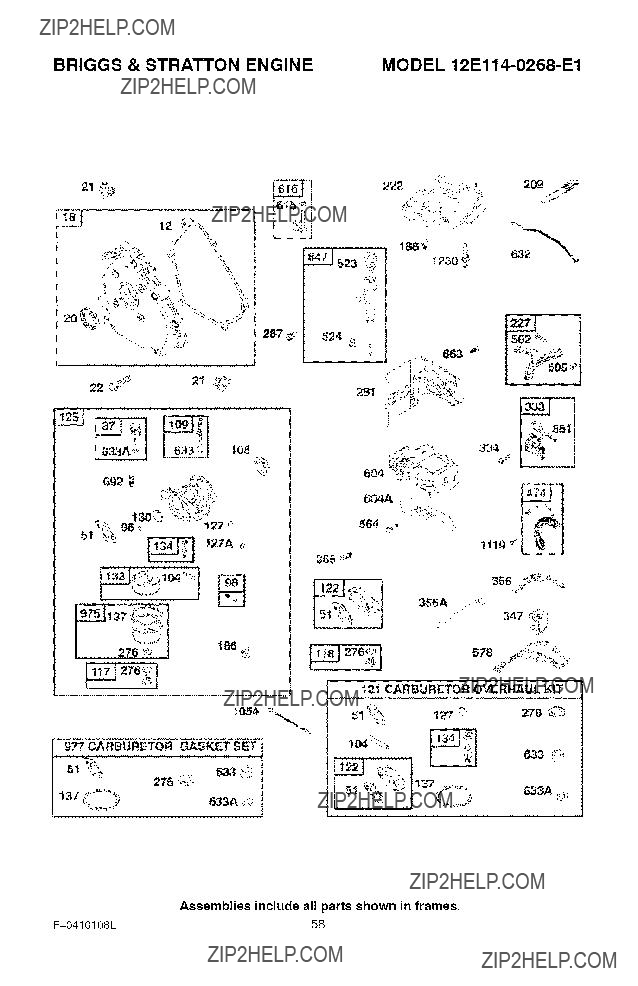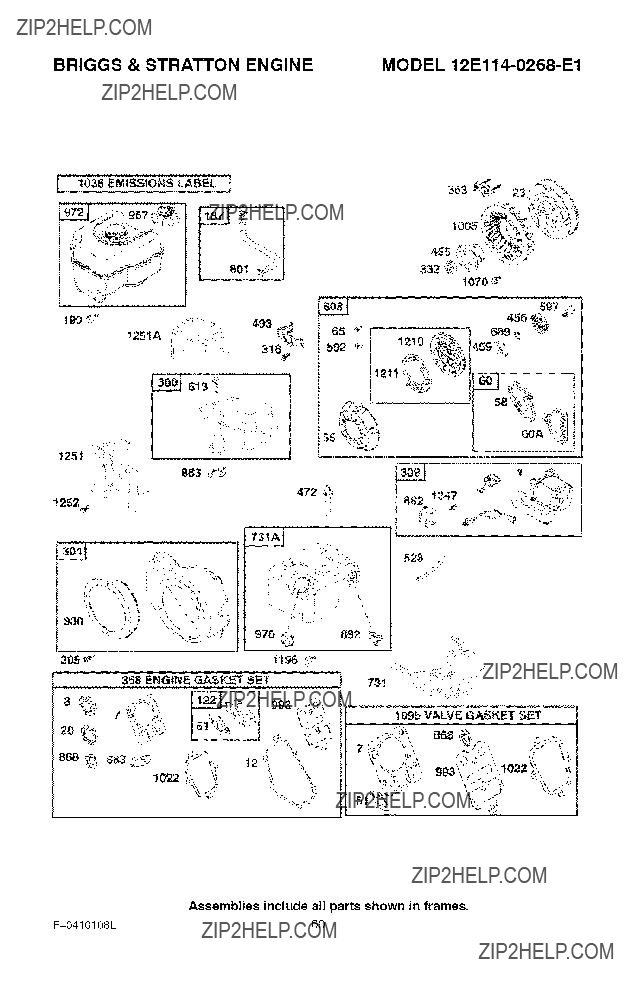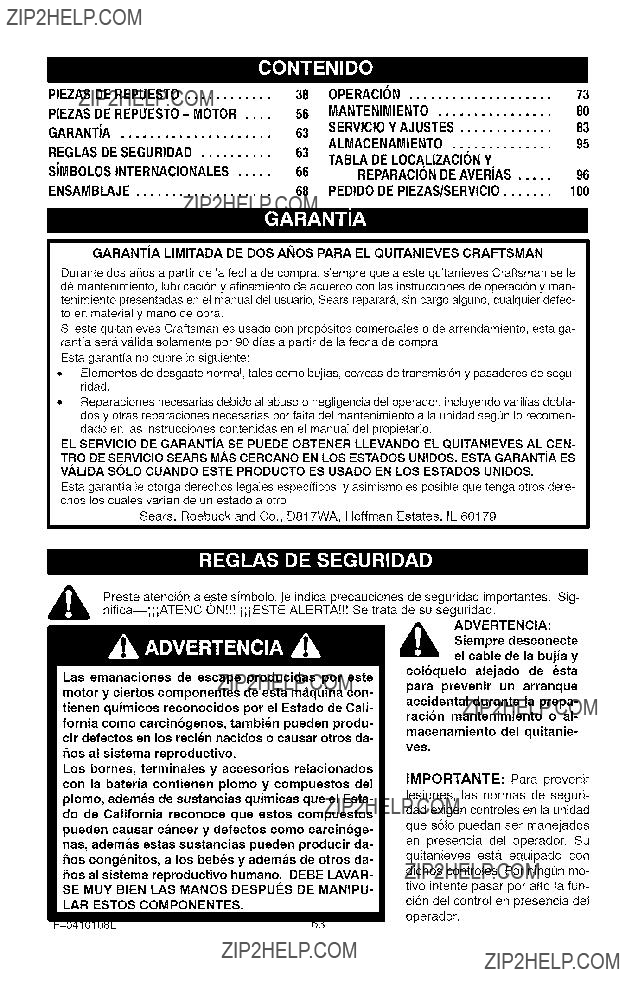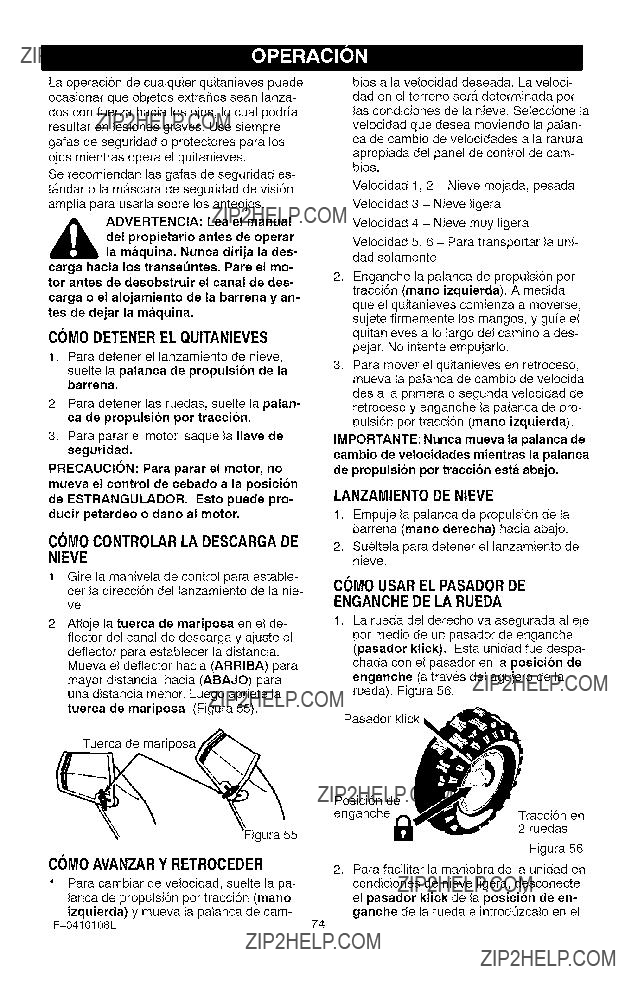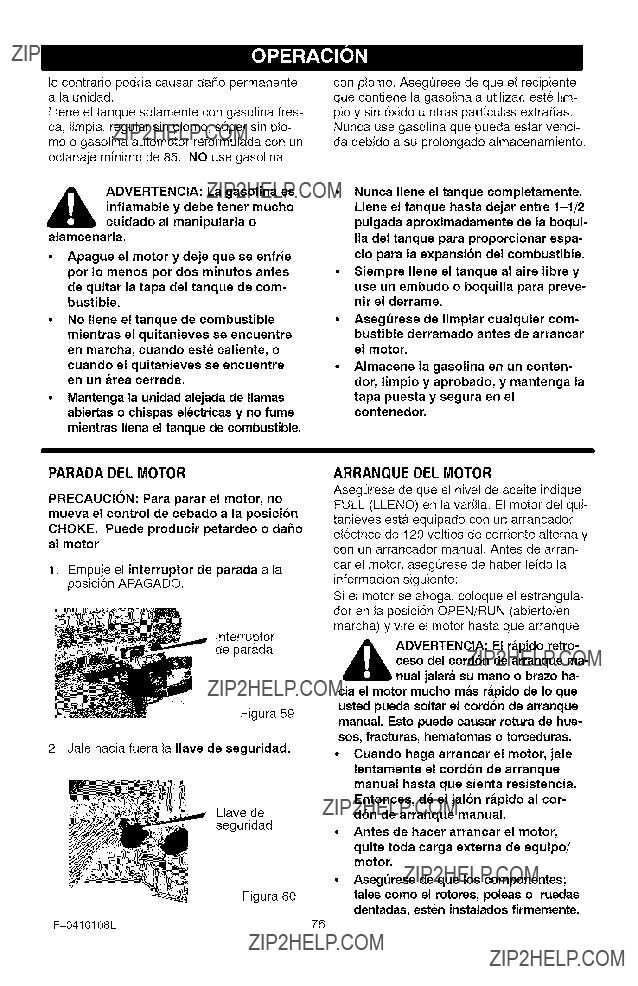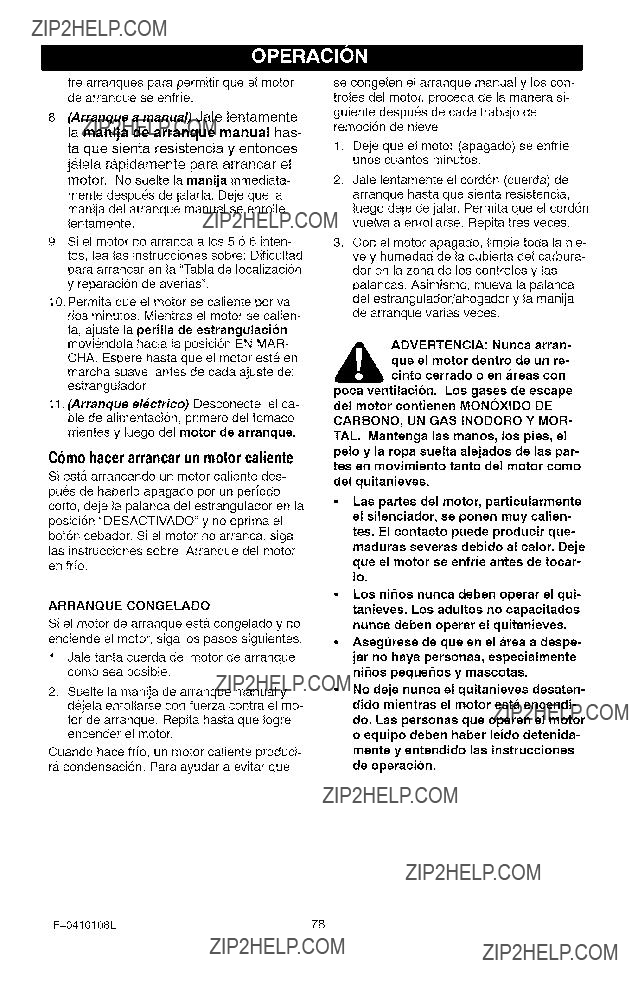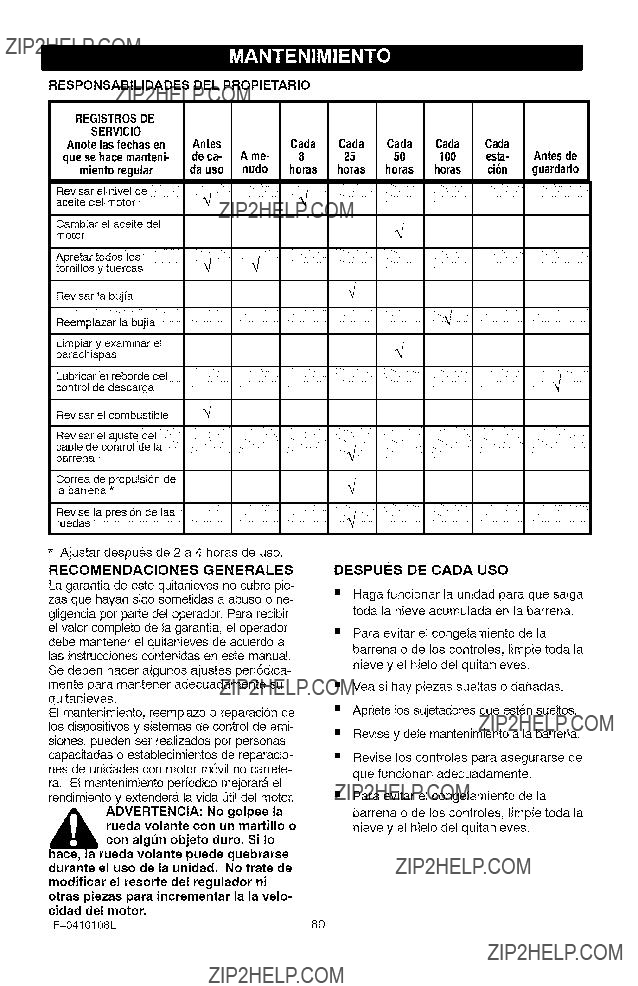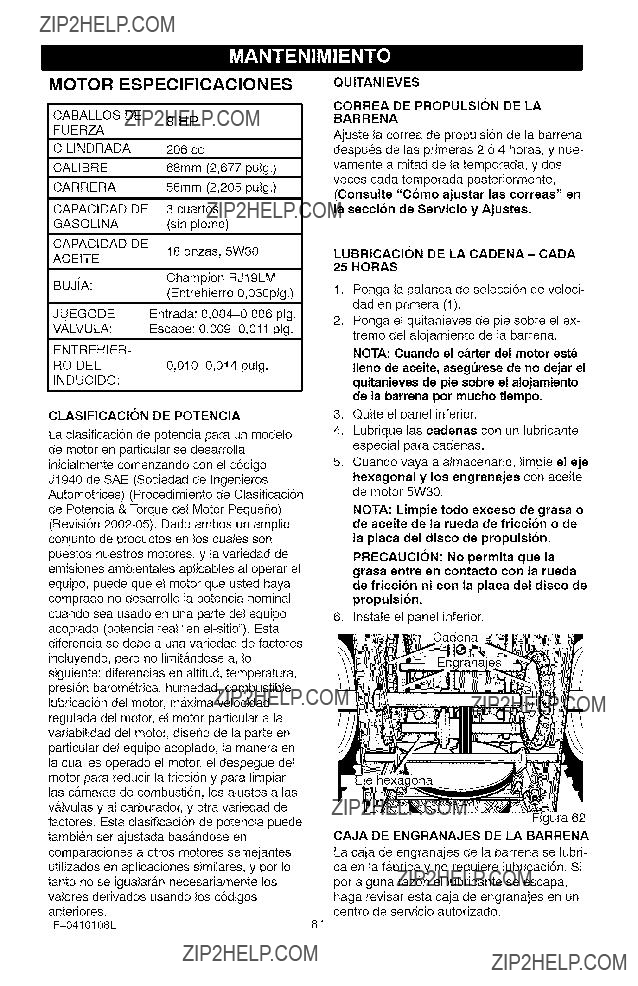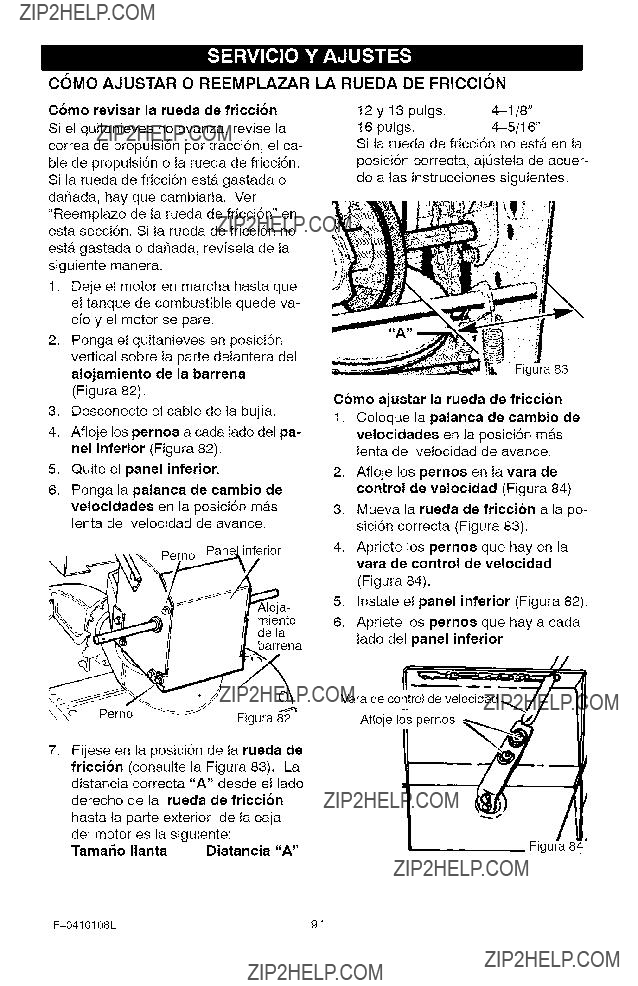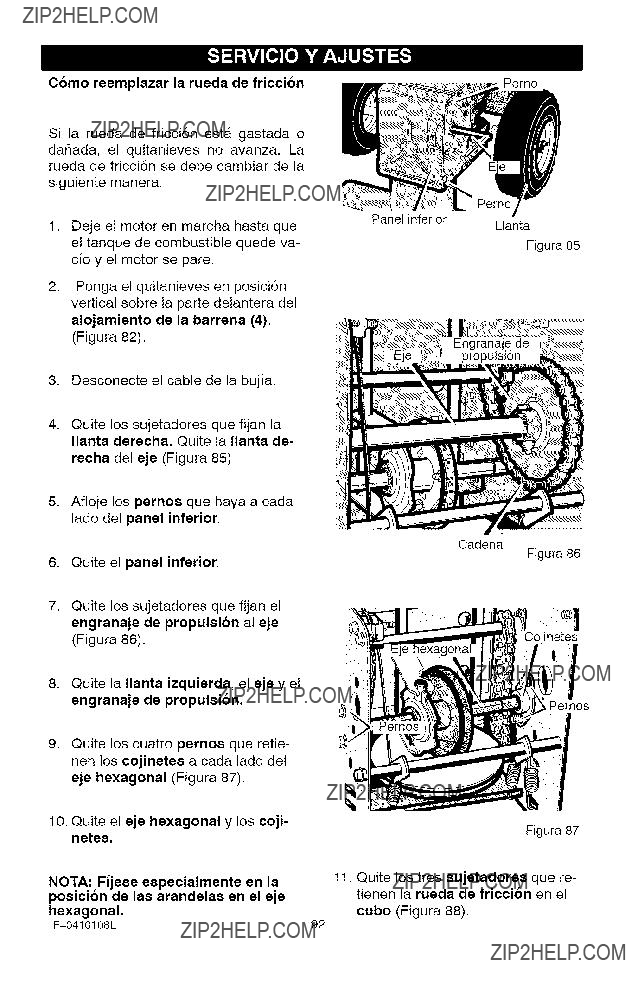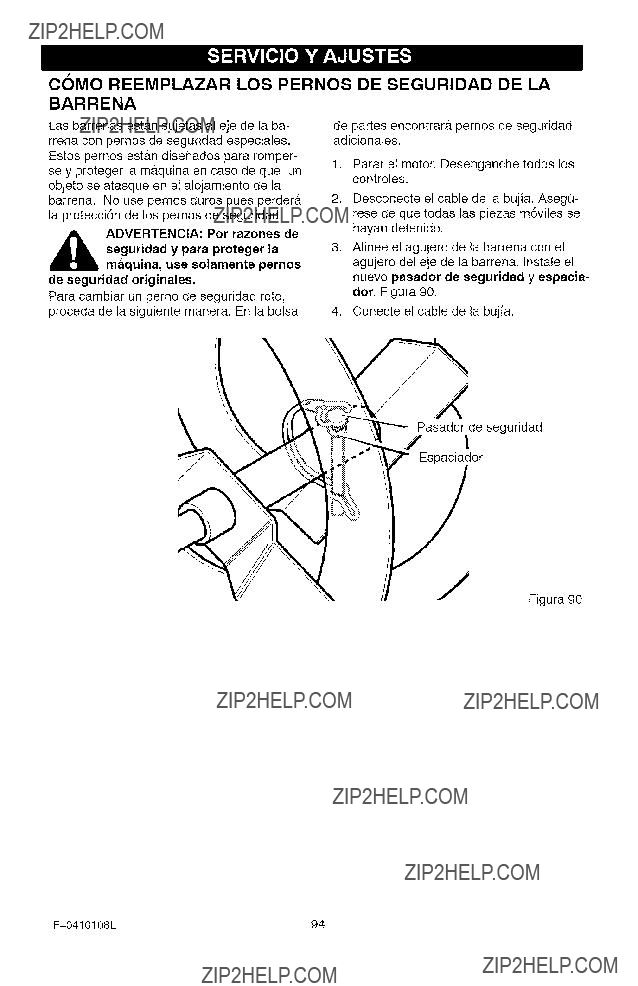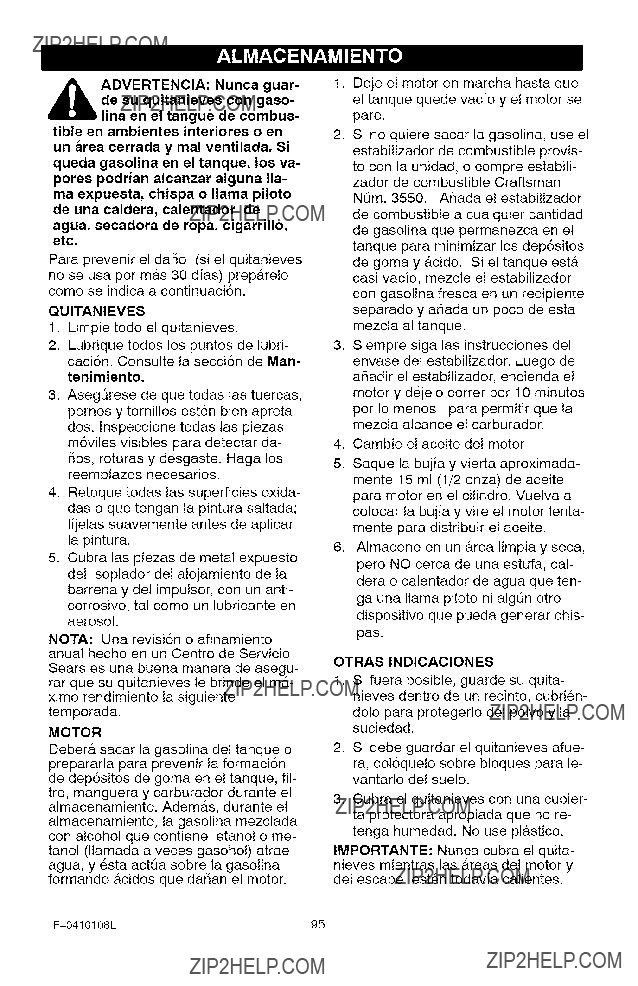TRAINING
1.Read this operating and service instruction manual carefully. Be thoroughly familiar with the controls and the proper use of the snow thrower. Know how to stop the snow thrower and disengage the controls quick- ly.
2.Never allow children to operate the snow thrower. Never allow adults to operate the snow thrower without proper instruction.
3.Keep the area of operation clear of all per- sons, particularly small children and pets.
4.Exercise caution to avoid slipping or falling especially when operating in reverse.
PREPARATION
1.Thoroughly inspect the area where the snow thrower is to be used and remove all doormats, sleds, boards, wires, and other foreign objects.
2.Disengage all clutches before starting the engine (motor).
3.Do not operate the snow thrower without wearing adequate winter outer garments. Wear footwear that will improve footing on slippery surfaces.
4.Handle fuel with care; it is highly flam- mable.
a.Use an approved fuel container.
b.Never remove fuel tank cap or add fuel to a running engine (motor) or hot en- gine (motor).
c.Fill fuel tank outdoors with extreme care. Never fill fuel tank indoors.
d.Replace fuel cap securely and wipe up spilled fuel.
e.Never store fuel or snow thrower with fuel in the tank inside of a building where fumes may reach an open flame or spark.
f.Check fuel supply before each use, al- lowing space for expansion as the heat of the engine (motor) and/or sun can cause fuel to expand.
5.For all snow throwers with electric starting motors use electric starting extension cords certified CSA/UL. Use only with a re- ceptacle that has been installed in accord- ance with local inspection authorities.
6.Let engine (motor) and snow thrower ad- just to outdoor temperatures before starting to clear snow.
7.Always wear safety glasses or eye shields during operation or while performing an ad- justment or repair to protect eyes from
foreign objects that may be thrown from the snow thrower.
OPERATION
1.Do not operate this snow thrower if you are taking drugs or other medication which can cause drowsiness or affect your ability to operate this snow thrower.
2.Do not use the snow thrower if you are mentally or physically unable to operate the snow thrower safely.
3.Do not put hands or feet near or under ro- tating parts. Keep clear of the discharge opening at all times.
4.Exercise extreme caution when operating on or crossing gravel drives, walks or roads. Stay alert for hidden hazards or traffic.
5.After striking a foreign object, stop the en- gine (motor), remove the wire from the spark plug, thoroughly inspect snow thrower for any damage, and repair the
damage before restarting and operating the snow thrower.
6.If the snow thrower should start to vibrate abnormally, stop the engine (motor) and check immediately for the cause. Vibration is generally a warning of trouble.
7.Stop the engine (motor) whenever you leave the operating position, before un- clogging the auger/impeller housing or dis- charge chute and when making any repairs, adjustments, or inspections.
8.When cleaning, repairing, or inspecting, make certain the auger/impeller and all moving parts have stopped and all controls are disengaged. Disconnect the spark plug wire and keep the wire away from the spark plug to prevent accidental starting.
9.Take all possible precautions when leaving the snow thrower unattended. Disengage the auger/ impeller, stop engine (motor), and remove key.
10.Do not start or run engine in enclosed area, even if doors or windows are open. Ex- haust fumes are dangerous (containing CARBON MONOXIDE, an ODORLESS and DEADLY GAS).
11.Do not clear snow across the face of slopes. Exercise extreme caution when changing direction on slopes. Do not at- tempt to clear steep slopes.
12.Never operate the snow thrower without proper guards, plates or other safety pro- tective devices in place.
13.Never operate the snow thrower near en- closures, automobiles, window wells, drop- offs, and the like without proper adjustment of the snow discharge angle. Keep children and pets away.



